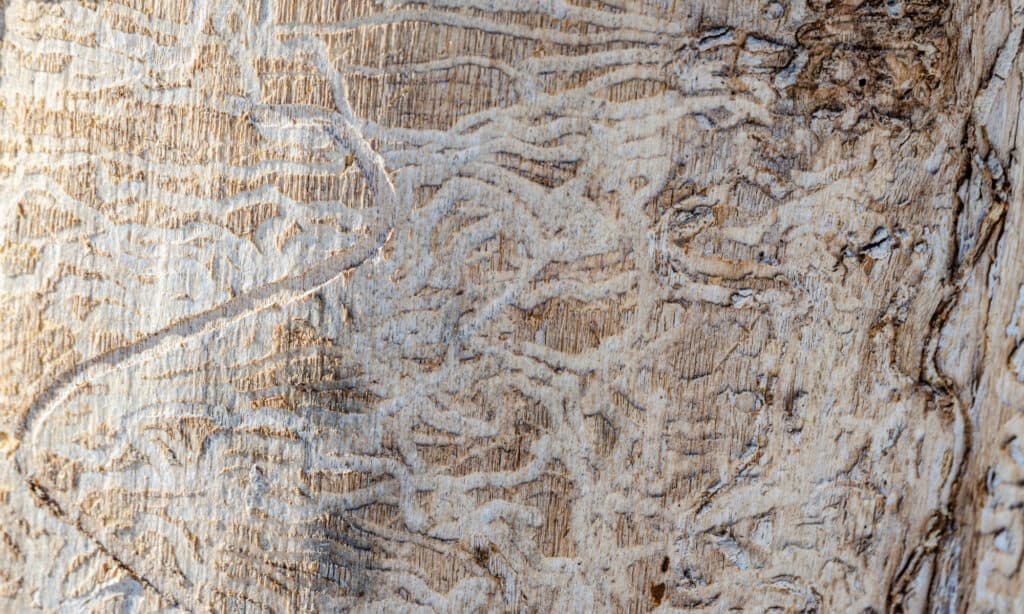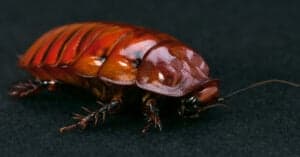All over North America, urban treescapes are under attack from a new invasive insect species. Since it was first detected in Michigan about two decades ago, emerald ash borers have now spread to more than 25 US states, killing over 50 million trees and destroying cityscapes. More than seven billion ash trees are at risk of being destroyed by these invasive species. It can be difficult to tell if you have emerald ash borers attacking your ash trees already. The insect’s ability to spread without being noticed is one of the major reasons an infestation is quite difficult to deal with. Knowing how to identify these insects and the signs of an ongoing infestation is one of the most vital ways of curtailing a spread.
What Are Emerald Ash Borers?
The Emerald Ash borer (Agrilus planipennis) is an invasive insect species brought into the United States from Asia. This wood-boring beetle only attacks ash trees (Fraxinus spp.), which is one of the most important landscaping tree species in the United States. The insect is responsible for the destruction of millions of these trees.
Emerald Ash borers are typically spread through the movement of infested firewood from one area to the other. Thus early detection isn’t just a way to save infested trees from damage. But it is also essential in curtailing the spread of the beetles from one location to the other.

This pattern of damage was caused by the Emerald Ash Borer. Trees that have been damaged by Emerald Ash Borers inevitably die.
©iStock.com/Pito Fotos
How To Tell If You Have Emerald Ash Borers
So how do you know if you have emerald ash borers in your ash tree? Although the insects’ metallic green wing color is unmistakable, emerald ash borers are still difficult to spot, especially when you do not know what to look out for. The larvae, which are the main cause of damage to plants, are even harder to detect since they borrow deep into trees. However, there are some simple ways to detect an infestation.
General Symptoms
When trees are attacked by insect pests, diseases, drought, or any other issue, they show obvious signs of decline. These symptoms are typically the first thing you see before you even identify the cause of the issue. Thus, if your emerald ash tree is showing any of the signs of decline covered below, you have good reasons to suspect emerald ash borers. Some of the general symptoms to watch out for include:
Canopy Thinning and Crown Dieback
The feeding activities of the ash borer’s larvae cause damage to the tissues that transport nutrients and water from one part of the plant to the other. One of the most obvious signs of damage that shows up is the thinning of foliage in the upper canopy of the trees. As the problem progresses, the branches may begin to die out over time.
Of course, you should note that canopy thinning can also be caused by other factors. This includes diseases and soil compaction. Therefore, this symptom is not a definite sign that you have emerald ash borers on your tree.
Epicormic Sprouting
As the damage to nutrient transporting vessels in certain parts of the plant progresses, the stressed plant may try to adapt by growing new leaves and branches in new places. Usually, the new growth appears at the base of tree trunks or even on main branches. This is known as suckering or epicormic sprouting.
Splitting Bark
In an attempt to protect itself, the ash tree may try to wall off already damaged tissues by developing thick layers of corky tissues. These tissues push against the tree’s outer bark, causing visible splits along the tree’s trunk.
Woodpecker Damage
Woodpeckers typically seek out trees that have been infested by the larvae emerald ash borers. However, this is a common symptom of any significant insect infestation. Woodpeckers usually seek out trees like this to feed on insect larvae. This leads to a type of damage known as flecking or bronzing. Thus, their presence only confirms an insect infestation. But it could be any other type of insect aside from ash borers.
Specific Signs of EAB Destruction
The symptoms highlighted above show that there might be problems with your ash tree, and you should take a closer look. If you notice any of these general symptoms, you should check for specific signs such as the following:
D-Shaped Exit Holes
Adult emerald ash borers emerge from the pupa between June and July. When they do, the exit hole at their point of exit typically has a distinct “D shape.” It measures approximately ⅛ inches. The hole can be oriented in any direction.
S-Shaped Galleries
The larvae of emerald ash borers create distinct serpentine galleries (S-shaped tunnels) in the tree as they move from one part of the tree to the other. The S-shaped tunnel is typically 1/8 inch wide and can be found underneath the tree’s bark. The tunnel is usually packed with a mixture of fine sawdust and insect excrement known as frass.
What Do Emerald Ash Borers Look Like?
The final confirmation of an emerald ash borer infestation is the presence of larvae, pupae, or adults of the insect. Adult emerald ash borers are known for their metallic green color (which is how they got their names in the first place). The body of the insect is about ½ inch in length and just ⅛ inch wide. They have a short antenna, a flat back, and a round belly.
The larvae of this insect (which is what causes most of the damage) have a creamy-white color. Their body is typically flat and segmented. The larvae can grow as much as one inch in length when fully mature.
Why Should You Learn How To Identify Emerald Ash Borers?
The emerald ash borer infestation in North America is still ongoing. Scientists are still looking out for ways to curtail the insect’s spread. Most times, infestations are discovered after several years, so saving the tree is virtually impossible. Trees that have lost more than 50% of their canopy are beyond saving. Usually, infested trees are destroyed to prevent the insect from spreading. However, experts say that infested ash trees stand a higher chance of being saved if the infestation is identified early (as early as the first year). In this case, the host tree is still healthy, and treatment is more likely to be effective.
Conclusion: What To Do If You Have Emerald Ash Borers In Your Tree.
Once you discover a possible infestation of emerald ash borers in your tree, it is best to inform experts right away. Usually, response varies from taking no actions at all to implementing aggressive management, especially if you have trees that can still be saved. The already declining trees are removed while the healthy ones are treated.
Up Next
How Do You Get Rid Of Emerald Ash Borers? – Now that you have identified emerald ash borers in your garden, learn how to get rid of them.
Why are invasive species dangerous to the environment– Invasive species like the emerald ash borer threaten the balance of the ecosystem. Here’s why they’re so dangerous.
The 5 Best Emerald Ash Borer Treatments To Save Your Trees – Getting rid of emerald ash borers is a bit complicated. However, here are 5 great options you can consider.
The photo featured at the top of this post is © CC BY 2.0. – License / Original
Thank you for reading! Have some feedback for us? Contact the AZ Animals editorial team.






